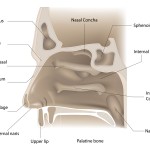
The maxillary sinus and the roots of the posterior teeth are closely related. Occasionally following infection or dental treatment damage can result in openings between the mouth and the sinus. These oro-antral communications (OAC) as can occur following extraction with rates reported to vary between 0.3 to 4.7%. A wide range of surgical and non-surgical techniques have been used to treat the condition.
The aim of this review was to assess the effectiveness and safety of various interventions for the treatment of oro-antral communications and fistulae due to dental procedures.
Methods
Searches were conducted in the Cochrane Oral Health Group’s Trials Register, Cochrane Central Register of Controlled Trials (CENTRAL), Medline, Embase, US National Institutes of Health Trials Registry and the World Health Organization (WHO) International Clinical Trials Registry Platform (http://www.who.int/ictrp/en/).
Randomised controlled trials (RCTs) evaluating any intervention for treating oro-antral communications and oro-antral fistulae (OAF) due to dental procedures. Studies in patients with oro-antral communications, fistulae or both related to Caldwell-Luc procedure or surgical excision of tumours were excluded. Complete closure of the OACs /OAFs assessed clinically and with patient reported outcomes was the primary outcome.
Two reviewers independently selected studies abstracted data and assessed risk of bias. Risk ratios (RR) and 95% confidence intervals were presented were presented and overall quality of the evidence was assessed using the GRADE approach.
Results
- Only 1 study involving 20 patients was included.
- The risk of bias was unclear.
- The study compared pedicled buccal fat pad and buccal flap.
- No evidence of a difference between interventions for the successful (complete) closure of an oro-antral communication was seen one month after the surgery, RR=1.00 (95% Cl; 0.83 – 1.20).
- All oro-antral communications in both groups were successfully closed so there were no adverse effects due to treatment failure.
Conclusions
The authors concluded
We found very low quality evidence from a single small study that compared pedicled buccal fat pad and buccal flap. The evidence was insufficient to judge whether there is a difference in the effectiveness of these interventions as all oro-antral communications in the study were successfully closed by one month after surgery. Large, well-conducted RCTs investigating different interventions for the treatment of oro-antral communications and fistulae caused by dental procedures are needed to inform clinical practice.
Comments
This review title was identified as a priority title by an oral and maxillofacial surgery expert panel as part of the Cochrane Oral Health Group prioritisation exercise. An earlier review of this topic was published in 2011 although that review only included observational and retrospective studies. Despite an extensive database search this Cochrane review only identified one small study that only compared two of the wide range of surgical and non-surgical approaches that have been used to manage OACs. Large well conducted RCTs are needed to provide better quality evidence to inform clinical practice.
Links
Primary paper
Kiran Kumar Krishanappa S, Prashanti E, Sumanth KN, Naresh S, Moe S, Aggarwal H, Mathew RJ. Interventions for treating oro-antral communications and fistulae due to dental procedures. Cochrane Database of Systematic Reviews 2016, Issue 5. Art. No.: CD011784. DOI: 10.1002/14651858.CD011784.pub2.
Other references
Cochrane Oral Health Group –Priority reviews
Franco-Carro B, Barona-Dorado C, Martínez-González MJ, Rubio-Alonso LJ, Martínez-González JM. Meta-analytic study on the frequency and treatment of oral antral communications. Med Oral Patol Oral Cir Bucal. 2011 Aug 1;16(5):e682-7. PubMed PMID: 20711106.

Oro-antral communications – insufficient evidence for treatment approaches https://t.co/dNcQEBA5So
Oro-antral fistula – Insufficient evidence for effectiveness of treatments https://t.co/dNcQEBA5So
Insufficient evidence for effectiveness of treatments for oro-antral communications https://t.co/dNcQEBA5So
Effectiveness of treatments for oro-antral fistula –insufficient evidence https://t.co/dNcQEBA5So
Don’t miss- Oro-antral communications – insufficient evidence for treatment approaches https://t.co/dNcQEBA5So